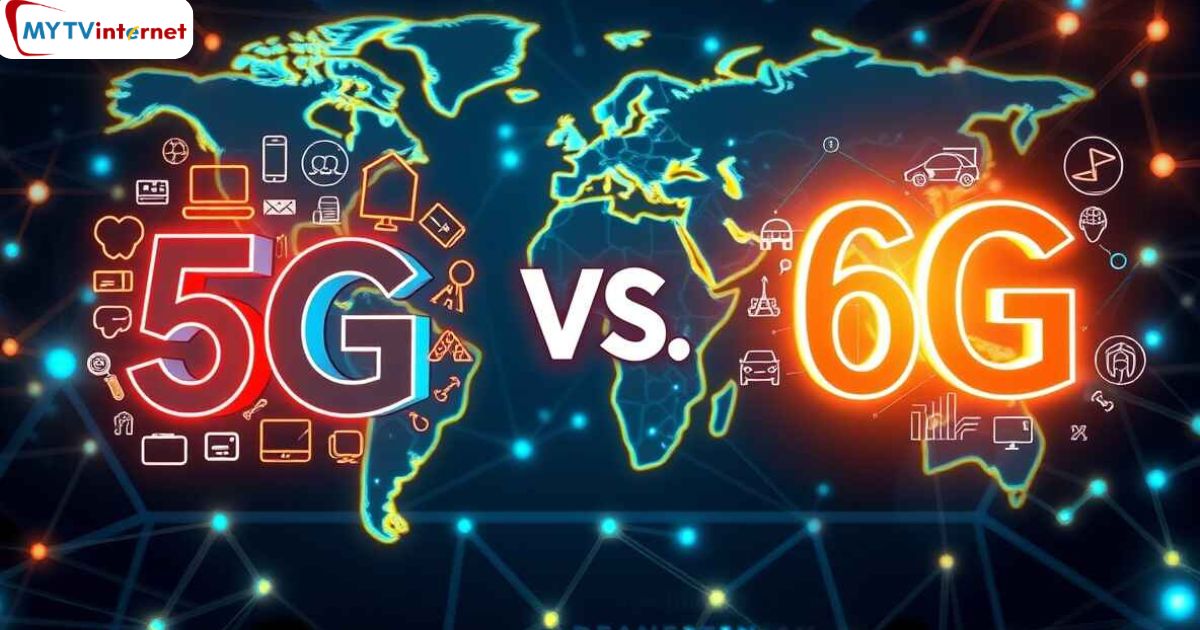5G and 6G wireless technologies are two of the most important evolutionary steps in the world of high-speed internet. They have transformed the world of speed, coverage, and how society communicates. This in-depth blog covers the most important distinctions and benefits. It explains how these wireless technologies have affected the world in real-life applications of 5G vs 6G. It also looks at speed, coverage, and other transformational opportunities they have provided.
What is 5G? Present and Peak Capabilities
5G is the fifth generation of wireless technology. Most of the high-speed internettoday is driven by 5G. It is faster with a lower latency than 4G. It is capable of reaching maximum speeds of 20 Gbps. This makes it easy to do video calls, cloud gaming, and real-time applications such as medical monitoring. The 5G is based on software-defined and virtualized networks.
Claim Your $100 Discount—Call Now: +1(855)375-6541
A smooth transition between cellular and Wi-Fi services is possible. Rural areas benefit from expanded coverage. New capabilities, such as Massive MIMO and beamforming, add further strength. Already, sectors such as healthcare and automotive have adopted it, making innovations smarter, safer, and more connected.
Exploring 6G: The Next Generation of Wireless
The 6G wireless technology is evolving fast. National laboratories are guiding official roadmaps and other research, including the NIST Communications Technology Laboratory in the U.S. Industry estimates indicate that 6G will be commercially available in 2030. Analysts estimate that 6G will be significantly faster. It will have lower latencies and higher capacity. It will also offer more extensive coverage than 5G.
The technical features of 6G are:
- Theoretical peak data rates of hundreds of gigabits per second. It may even reach 100 Gbps in chip prototyping and even greater in the laboratory.
- Ultra-low latency will deliver digital experiences in real time. This includes highly powerful real-time AI, holographic communications, and future-generation industrial automation.
- Extreme frequency band use will go down to 110 GHz and above. New hardware will allow unknown data throughput and combined ground and space-based connectivity.
5G vs 6G Speed: The Future of Connectivity
| Technology | Theoretical Peak Speed | Real-World Median Speed | Latency |
|---|---|---|---|
| 5G | 20 Gbps | ~70–300 Mbps | ~1 ms (Ultra-reliable) |
| 6G | 100+ Gbps | Lab demos up to 938 Gbps | Near-instant, projected sub-ms |
Wireless Technology Coverage: Expanding Reach and Resilience
The 5G coverage is increasing rapidly. It enhances internet connectivity in city and rural communities through more efficient use of spectrum and edge computing. It also supports network slicing. Special networks form to serve specific purposes, such as supporting businesses or responding to emergencies.
However, cities have most of the fastest 5G speeds. 6G will go well beyond this and integrate cell towers with satellites to reach all parts of the globe. It will unite masses of devices, empower smart cities, and introduce high-speed internet reliably to remote locations across the world.
High-Speed Internet for All: The Real-World User Benefits
- With 5G: Fast and high-quality internet is expected in cities and most suburban or rural locations. It helps in the streaming of videos, games, and phone or video calls. The 5G fast response time and flexible network structure is already used by industries such as telehealth, self-driving cars, and delivery services.
- 6G: Wireless internet will be virtually as fast and stable as wired connections. It will also facilitate AI-driven decision-making. It will enable immersive AR and holographic experiences. It will provide secure communication even in case of an emergency. 6G will also be able to support more advanced automation, space communication, and smart city infrastructure at a much larger scale.
5G vs 6G: Which Will Power Tomorrow’s Internet?
5G will provide a high-speed and high-quality wireless internet. It will support new connected experiences and change the way people work, learn, and play. Its speed, low latency, and versatile coverage are useful in such industries as telehealth, autonomous vehicles, and smart houses.
Call Now: +1(855)375-6541
In the 2030s, 6G will introduce even faster and near-instant connectivity. It will be universal. It will enable AI applications, experiences, and high-order automation. Whether to go with 5G or 6G lies in the trade-off between present benefits and future readiness to have a smarter, more connected technology. To know more about the Internet plans, get in touch with the My TV Internet customer care number.



